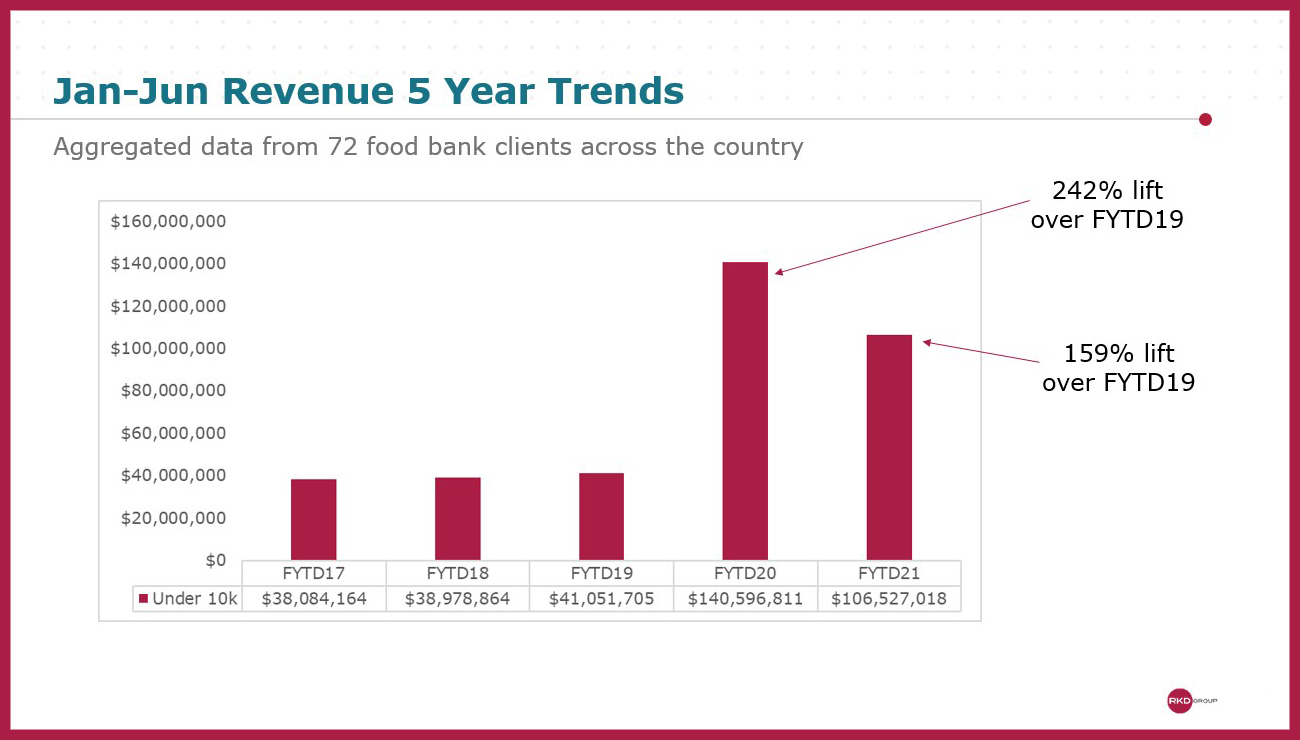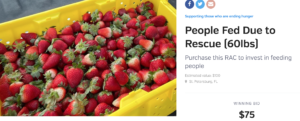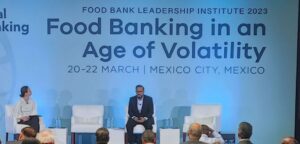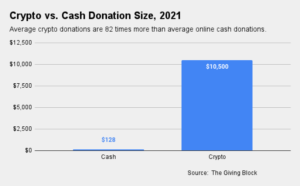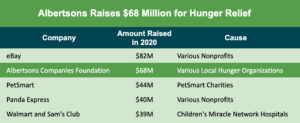Food banks are riding the wave of a significant and durable increase in pandemic-related charitable giving.
The fundraising and marketing provider RKD Group analyzed data from 72 food banks to find that fundraising revenue in second-quarter 2021 was a whopping 159% higher than 2019 levels (though down about 24% from the spike in giving that occurred during the height of the pandemic last year).
Similarly, the number of active donors was up 94% from 2019 (although down 25% from 2020), according to RKD, which presented its findings in a webcast late last month. In addition, revenue per active donor is at $230, the highest the firm has seen in the past five years.
The momentum of increased giving is so strong that RKD officials expect it is here to stay. “It’s a new normal,” said Lynn Howes, Vice President, Data & Analytics at RKD Group. “We’re not going to go back to 2019 levels. You’ve got so many donors who are continuing to give.”

Buoyed by the higher-level giving, some food banks are seeking to make it sustainable by hiring new officers, investing in digital technology, and developing strategies to steward new monthly donors.
Big growth in digital fundraising has helped to dictate some recent hires. Three of the six positions Second Harvest Food Bank of Central Florida has hired over the past year are in digital marketing, said Maria Shanley, Director of Marketing and Data Management, also speaking on the RKD webcast. The food bank has also hired two major gift positions and a data entry position, she said.
At Houston Food Bank, rather than have a single employee focus on both direct mail and online giving, the food bank created a new role of online giving coordinator, said Jessica Dominguez, Annual Giving Manager, during the same online event. “It’s been a tremendous benefit to have that extra role on our team,” she said. The food bank also hired a new strategic gifts officer.
Digital budgets are also expanding. Second Harvest of Central Florida doubled its digital budget for this fiscal year, Shanley said. Since the pandemic, it is doing more of everything, including Facebook ads, display advertising and paid search. And with the addition of a new multimedia specialist on its digital marketing team, it plans to create more videos in-house to post on Facebook, she added.

Houston Food Bank recently completed a social media audit to better understand the types of messages people respond to on the various platforms, Dominguez said. One finding so far is that LinkedIn gets a lot of engagement, but is underused by the food bank. “We have plans to utilize that a lot more in the coming year,” she said.
As monthly givers stepped up during the pandemic, food banks took care to give them extra attention. Second Harvest of Central Florida, for example, is ramping up its online customer service center so monthly givers can update their expired credit cards through an easy-to-use portal. It is also adding an option for donors to give via a checking account, Shanley said, which would eliminate the problem of expired cards in the first place.
Recently, the food bank developed an overall communications strategy for monthly donors, including a welcome letter, a 60-day plan, monthly outreach and a yearly communications plan. After noticing that monthly donors were apt to answer phone calls, it began calling them as well. “We’re taking small steps to get to where we want to be,” Shanley said.
Other small improvements to the donor experience include adding the option to cover credit card processing fees, as well as a more sophisticated calculator. For example, the calculator showing that a $10 donation leads to 40 meals will now show 80 meals during matched giving campaigns, Shanley said.
Houston Food Bank is also making tweaks to the way it interacts with monthly donors. Rather than send the same automated thank-you email every month, the food bank is taking the opportunity to send emails that educate and provide context. “Food banks do so much beyond delivering food,” Dominguez said. “We want to make sure our donors know about that.” — Chris Costanzo
CAPTION ABOVE: The five-year giving trend at food banks, as compiled by RKD Group.
Like what you’re reading?
Support Food Bank NewsConnect with Us:
